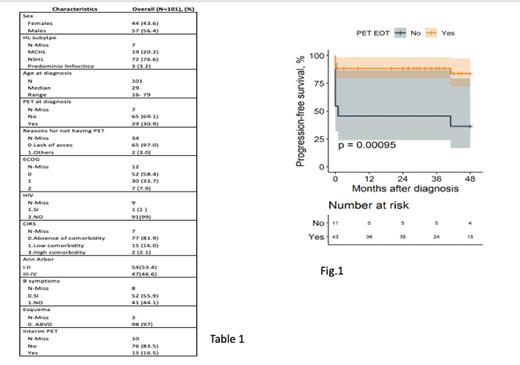Background: Hodgkin's lymphoma (HL) is a highly curable lymphoproliferative neoplasm. Assessment of HL at baseline (pre-therapy), intermediate (iPET) and end-of-therapy (EOT) by positron emission tomography/computed tomography (PET/CT) is considered a “gold standard” procedure and has become the main tool for clinical decision making in the management of HL. However, inequity in access to diagnostic medical technology in Paraguay has not allowed clinicians to manage these patients as recommended by international guidelines. We describe here the clinical characteristics, access to PET/CT study and outcomes of patients with HL treated in Paraguay.
Methods: We conducted a retrospective cohort study of patients aged ≥17 years with newly diagnosed HL in 4 academic centers in Paraguay between 2015 and 2022, with follow-up until July 2023. Medical records were manually reviewed and data were abstracted in a standardized form. A historical analysis was performed to evaluate the utilization of PET/CT in all stages of HL treatment (baseline, intermediate and EOT). Survival probabilities were estimated using the Kaplan-Meier method.
Results: A total of 145 patients were identified; 101 had sufficient data for analysis (Table 1). Patients were young, with a median age of 29 years (16-79) and a slight male vs. female predominance (56.4% vs. 43.6%). Nodular sclerosis (76.6%) and mixed cellularity (20.2%) were the most frequent HL subtypes. More than half of the patients (58%) had ECOG 0, 50% advanced stage and 55.9% B symptoms. The majority of patients (97%) received an ABVD regimen as induction therapy. Sixty-nine percent of patients did not undergo PET/CT at baseline, most of them (97%) due to lack of insurance coverage, 16.5% underwent iPET and 58.4% underwent PET/CT at EOT. With a median follow-up of 44 months, overall survival (OS) at 4 years was 77% and progression-free survival (PFS) was 46%. In a subgroup analysis to investigate the short 4-year PFS observed in our cohort, the PFS of patients who underwent PET/CT at EOT versus those who did not was 84 versus 36, respectively (Figure 1).
Conclusions: To our knowledge, this is the first study to characterize the clinical characteristics and outcomes of patients with HL in Paraguay. It is striking to see that lack of access to PET/CT had a significant impact on PFS in our patient population. HL is a highly curable disease affecting young people, therefore, minimizing late side effects in this patient population (e.g., secondary comorbidities and malignancies) remains a high priority. The authors' conclusion is to raise awareness of the importance of improving access to diagnostic tools such as PET/CT to provide optimal care for our patients, especially those who do not have access to PET/CT.
Disclosures
No relevant conflicts of interest to declare.


This feature is available to Subscribers Only
Sign In or Create an Account Close Modal